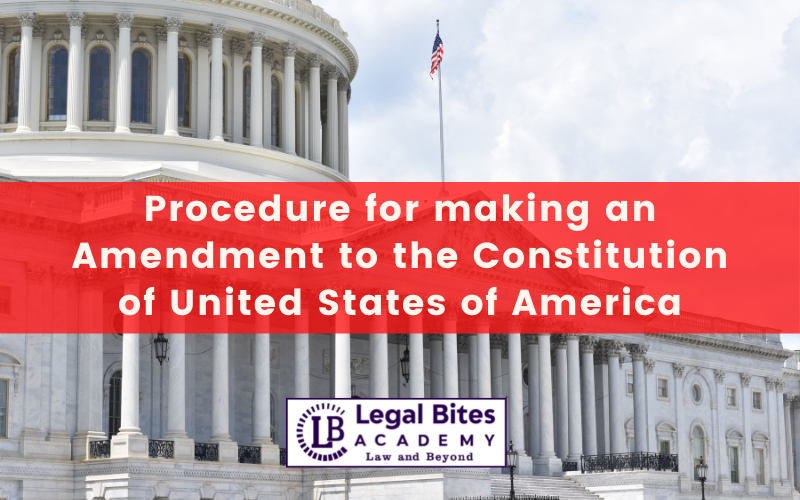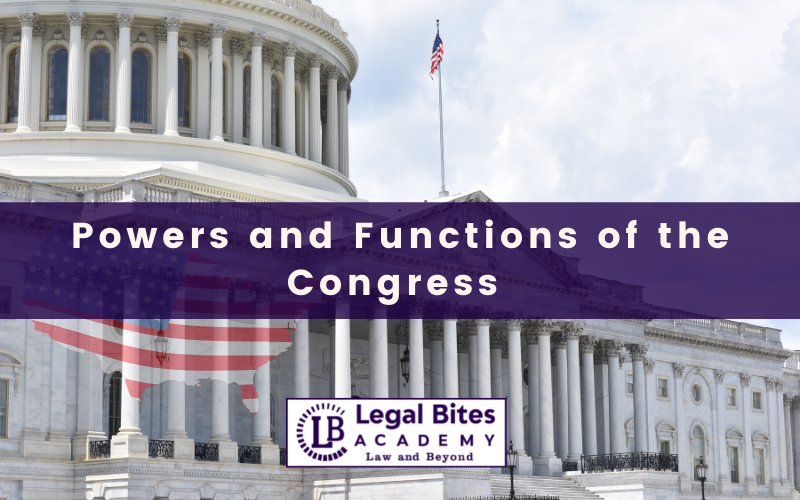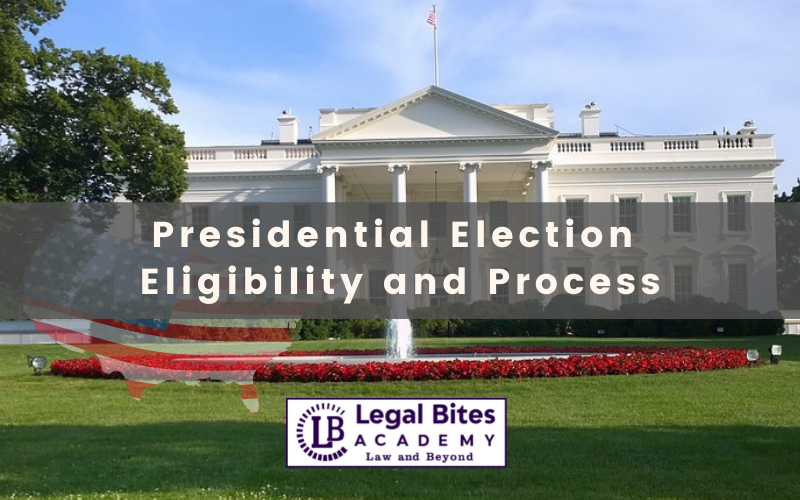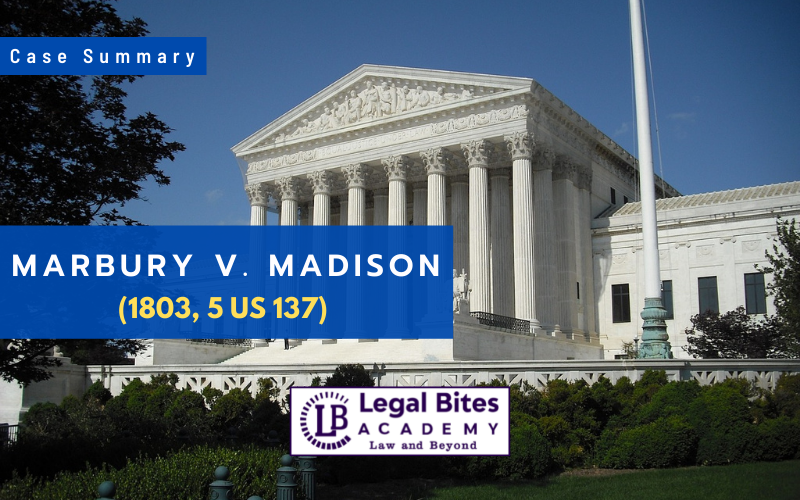Procedure for making an Amendment to the Constitution of United States of America
The present article elaborately provides the procedure for making an amendment to the Constitution of United States of America. The Constitution of the USA is rigid because to make an amendment, the procedure necessitates maximum majority favour at both the proposal and ratification stages. This, being the most common procedure of amending the constitution, requires a proposal by… Read More »
;
The present article elaborately provides the procedure for making an amendment to the Constitution of United States of America. The Constitution of the USA is rigid because to make an amendment, the procedure necessitates maximum majority favour at both the proposal and ratification stages. This, being the most common procedure of amending the constitution, requires a proposal by a two-thirds vote in both houses of Congress, subsequently followed by ratification by three-fourths of the...
The present article elaborately provides the procedure for making an amendment to the Constitution of United States of America.
The Constitution of the USA is rigid because to make an amendment, the procedure necessitates maximum majority favour at both the proposal and ratification stages. This, being the most common procedure of amending the constitution, requires a proposal by a two-thirds vote in both houses of Congress, subsequently followed by ratification by three-fourths of the states.
I. Introduction
The procedure for amending the Constitution of the United States is provided in Article V of the U.S. Constitution. The U.S. Constitution is a rigid one and poses a unique challenge both for state legislatures as institutions and individual members of a state legislative body. This is because of the relatively rare implementation of Article V and also because the case law interpreting the requirements of the procedure has not led to a clear and concise body of law.
Instead, in the U.S. most of the laws have developed through a jurisprudential deliberation through a number of cases, arising out of particular circumstance, in particular states, and at particular times across history.[1]
Article V of the U.S. Constitution which establishes the process for amending the constitution states as under:
“The Congress, whenever two-thirds of both houses shall deem it necessary, shall propose amendments to this Constitution, or, on the application of the legislatures of two-thirds of the several states, shall call a convention for proposing amendments, which, in either case, shall be valid to all intents and purposes, as part of this Constitution, when ratified by the legislatures of three-fourths of the several states, or by conventions in three fourths thereof, as the one or the other mode of ratification may be proposed by the Congress;
provided that no amendment which may be made prior to the year one thousand eight hundred and eight shall in any manner affect the first and fourth clauses in the ninth section of the first article; and that no state, without its consent, shall be deprived of its equal suffrage in the Senate.”[2]
Therefore, there are essentially following four methods adopted for amending the U.S. Constitution:
- A two-thirds vote in both houses of the U.S Congress followed by ratification by three-fourths of the state legislatures.
- A two-thirds vote in both houses of U.S. Congress followed by ratification by ratification conventions in three-fourths of the states.
- A national constitutional convention called by two-thirds of the state legislatures followed by ratification by three-fourths of the state legislatures.
- A national convention called by two-thirds of the state legislatures followed by ratification by ratification conventions in three-fourths of the states.
The U.S. Supreme Court has ruled that the amendment process established under Article V is the only method for adding or removing language from the Constitution.[3]
The text of Article V provides two possibilities for proposing an amendment:
- Congress may propose an amendment to the states, upon a two-thirds vote of both houses; or
- A convention may propose an amendment to the states which is called by Congress, on the application of two-thirds of the states.
Once an amendment is formally proposed, ratification may occur through one of the two processes, as determined by Congress:
- Ratification by three-fourths of state legislatures; or
- Ratification by three-fourths of states, acting by state convention.
Now, let us understand the procedure for amendment in the U.S. Constitution in a detailed way:
II. Procedure for making an Amendment to the Constitution of United States of America
The requirements mentioned under Article V of the Constitution provide the procedure for proposing amendments by Congress, the submission made to the states, and finally followed by ratification. These requirements are the basis for provisions of federal law, the customs, and practices that have developed over time to guide the amendment procedure.[4]
Hence, an amendment under the Constitution of the U.S. basically follows the below-given steps:
- Proposal by Congress
- Submission to States
- Ratification
Let us understand each of the steps separately:
Step 1: Proposal by Congress
Congress is empowered to submit a proposed amendment to the states on a two-thirds vote of both the House of Representatives and the Senate. Congress generally follows the custom of formatting the amendment proposals as a joint resolution of both the houses and the senate. The content of the joint resolution here includes the text of the proposed amendment and the method of state ratifications if it is to be done by legislatures or by state conventions. For the past century, nearly all joint resolutions have also included a set deadline for state ratification.
Step 2: Submission to States
After Congress gives its approval to the proposed amendment, it is not required to be presented before the President for its approval. Upon Congress’s approval, the proposed amendment is directly forwarded to the office of the Federal Register in National Archives and Records.
The Office of the Federal Register then publishes the proposed amendment and prepares a package of informative materials on the ratification process for delivery to each of the states. The Archivist of the USA sends the proposed amendment and informative materials to the Governor of each state who then submits the proposal to the state legislature for its consideration.
Step 3: Ratification
When a state legislature has ratified an amendment, it has to mandatorily submit a set of paperwork back to the National Archives and Records Administration. After submission, the officer of the Federal Register verified the authenticity and correct order of the documents that appeared and then acknowledges the receipt.
The National Archives and Records Administration is also vested with the duty to receive records of other legislative actions including rejection of an amendment or rescission of ratification; however, the administration does not have the power to make any substantive determination about the validity of these legislative actions.
It is to note that a ratified amendment becomes effective as of the day a sufficient number of state ratifications are completed and not on the day the certification is proclaimed.
Step 4: Tracking State Actions
The proposed amendment in order to take effect needs to be mandatorily ratified by a majority of at least three-fourths of the states. Congress has the power to set a time limit for state action and the duty to keep official count of the same is done by the office of the Federal Register at the National Archives. Each of the state legislatures must return specific material to show proof of their ratification.
Step 5: Announcement
When it appears that the requisite number of states has ratified the proposed amendment, the Archivist of the USA issues a proclamation certifying it as a new amendment in the American Constitution. The certification is then immediately published at the Federal Register and eventually in the USA Statutes-at-Large to serve as official notice of ratification.
It is important to note that state legislatures often call upon Congress to propose constitutional amendments. While this may bring certain political pressure on Congress to bear, it is absolutely under no constitutional obligation to respond to such calls. The U.S. Constitution doesn’t contain any provision requiring Congress to submit a proposed amendment upon request by a sufficient number of states.
III. Conclusion
The external efforts made by some state legislatures and other local groups or communities to make an amendment to the U.S. Constitution have put forth questions regarding the appropriate procedure for doing so as enshrined under the Constitution itself.
The founding fathers of the U.S. Constitution in its drafting have a strong motive to make it not easy at all to amend the nation’s founding documents and fundamental principles. So, we can say that the American Constitution was made rigid for a purpose and it has been serving effectively by ensuring there is no infringement to the laid down fundamental constitutional principles.
[1] Research Department, Minnesota House of Representatives, United States Constitutional Amendment Process Legal Principles for State Legislators, Available Here
[2] Article V of the U.S. Constitution, The Constitution of the United States: A Transcription, Available Here
[3] Ullman v. United States, 350 U.S. 422, 428 (1956).
[4] The U.S. National Archives and Records Administration, Constitutional Amendment Process, Available Here





